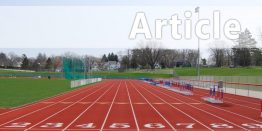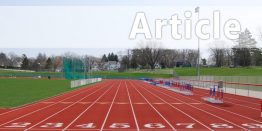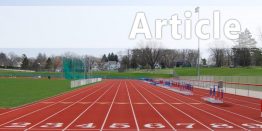|
Progressions to Obtaining a Proper Power
What I like young throwers to do next is to rock back and forth shifting their weight from the right foot to the left foot. As the thrower is rocking let them lift the non-supporting foot off the ground. This will allow for a great shift in their weight. It will also teach them about transferring their weight from one side of the body to the other. After rocking for a number of times when they shift their weight to their throwing foot, hold that position. What has occurred is all the weight is now back on the throwing foot side. Then rock again. Then hold the weight. Make sure when they hold the weight back that they can lift the blocking foot off the ground. Now with the weight back on the throwing side of the body, bend the throwing knee. This allows the thrower to get a lower level. A common mistake that occurs here is that the thrower will allow his/her weight to shift to the middle of both feet. The blocking knee will also bend. What you should see is the weight still back on and over the throwing side and the blocking leg straight. The reason we want to get a knee bend is because the implement is thrown with the legs. The legs, lower back, and glutes are much stronger than the arm. To utilize these muscles groups we must go from a low level to a high level (bending of knee to straightening of knee). This lifting action will give us our height at release. The next action is to give a quarter turn to the throwing side with the upper body. This will now load the implement behind the throwing hip. Make sure that when the athlete turns that he/she does not tilt the shoulders. The shoulders should stay parallel to the ground. If the athlete has limited flexibility in the abdomen area, it will be very difficult for the athlete to turn and load the implement. This loading allows for a increase in torque on the body which will when released add more force to the throw. There should be a straight line from the blocking toe through the body to the head of the thrower. He should look like a ski jumper going off the 90-meter hill. If the hips are out and not under of the chest is down the will not be a proper turn and lift to get the ultimate height and angle of release on the throw.
|
|
About the Author... |
|
|
| Gary Aldrich enters his fifth season as the Associate Head Coach for the men's and women's track and field program in 2011. Aldrich is primarily in charge of the field events and fall conditioning program.
The USTFCCCA Mideast Regional Assistant Coach of the Year winner in 2008 has brought a presence from the beginning, including a successful coaching pedigree and strength and conditioning program that propelled the track and field teams to new heights. The women's team enjoyed the successes his first season in 2007 as Jessica Meng and Becky Metler broke school records and earned UAA individual titles in the high jump and hammer throw, respectively. Meng also had the opportunity to compete at the 2007 NCAA Indoor Championships in just her sophomore season. Aldrich also guided the men's program to the 2007 UAA Outdoor Championship where James Hulley won three throwing titles and set the school record in the discus while earning UAA Outdoor Field Rookie of the Year honors. The men's team also saw Eric Tang win three jumping titles on his way to earning UAA Outdoor Field Performer of the Year, while Mike Reggie won the hammer throw. In all, Aldrich coached nine UAA Champions in 2006-07. Aldrich has published a discus video and DVD through M-F Athletic Co. called "Come to Practice", has written numerous articles about the various aspects of throwing events published on web sites such as www.mfathletic.com and holds his Level II USAT&F Coaching Certification in both jumps and throws and is a lead instructor for Level I USAT&F Coaching Certification. In July 2010, Aldrich served as the assistant throws coach for the NACAC (North American, Central American, and Caribbean Athletic Association) Under 23 Team. |







